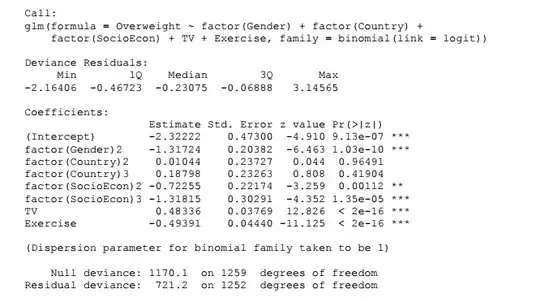First, it is always a good idea to plot the data:
library(lme4)
library(tidyverse)
dt <- read.csv("https://raw.githubusercontent.com/camhsdoc/data/main/random_slopes.csv")
dt$Subject <- as.factor(dt$Subject)
ggplot(dt, aes(y = Y, x = X1, colour = Subject, group = Subject)) + geom_point() + geom_smooth(method = "lm", se = FALSE)

So we can see straight away that there does appear to be variation in the intercepts, even though the x range starts at 1.
So there is probably something else going on in these data.
However, there was a singular fit. So I followed the guidance in this post which says to run a principal components analysis on the variance-covariance matrix of random effects.
...and if we look at the output of this we see:
mod <- lmer(Y ~ X1 * X2 + (X1 * X2 | Subject), dt)
## boundary (singular) fit: see ?isSingular
summary(rePCA(mod))
## $Subject
## Importance of components:
## [,1] [,2] [,3] [,4]
## Standard deviation 1.2748 1.1303 0.8397 2.245e-05
## Proportion of Variance 0.4505 0.3541 0.1954 0.000e+00
## Cumulative Proportion 0.4505 0.8046 1.0000 1.000e+00
So the variance is explained by the first three components indicating that one of them is unnecessary. Actually this step isn't really needed since this is what defines a singular fit, and we know already that it is singular.
and then fit a "zero correlation" model and look for a variance close to zero.
mod1 <- lmer(Y ~ X1 * X2 + (X1 * X2 || Subject), dt)
## boundary (singular) fit: see ?isSingular
summary(mod1)
##
## Random effects:
## Groups Name Variance Std.Dev.
## Subject (Intercept) 3.987e-09 6.314e-05
## Subject.1 X1 1.098e+00 1.048e+00
## Subject.2 X2 9.007e-01 9.490e-01
## Subject.3 X1:X2 1.213e+00 1.101e+00
## Residual 9.995e-01 9.998e-01
## Number of obs: 250, groups: Subject, 10
and indeed we see that the variance of the random intercepts is indeed very small, which brings us to the next model:
mod2 <- lmer(Y ~ X1 * X2 + (0 + X1 * X2 || Subject), dt)
summary(mod2)
##
## Random effects:
## Groups Name Variance Std.Dev.
## Subject X1 1.0983 1.0480
## Subject.1 X2 0.9007 0.9490
## Subject.2 X1:X2 1.2128 1.1013
## Residual 0.9995 0.9998
## Number of obs: 250, groups: Subject, 10
which on the face of it seems fine. However, we saw in the plot above that there is some variation in the intercepts. In my experience I have often found problems with singular fit when an interaction is included as a random slope. So I would also consider this model:
mod3 <- lmer(Y ~ X1 * X2 + (X1 + X2 | Subject), dt)
summary(mod3)
##
##
##
## Random effects:
## Groups Name Variance Std.Dev. Corr
## Subject (Intercept) 100.671 10.033
## X1 10.310 3.211 -0.95
## X2 12.375 3.518 -0.97 0.91
## Residual 5.572 2.360
## Number of obs: 250, groups: Subject, 10
The noteable thing about this model is that although the fit is not singular the correlations between the random effects are very high.
One way forward from here is to use a likelhood approach to choose the "best" fitting model:
anova(mod2, mod3)
## refitting model(s) with ML (instead of REML)
## Data: dt
## Models:
## mod2: Y ~ X1 * X2 + ((0 + X1 | Subject) + (0 + X2 | Subject) + (0 +
## mod2: X1:X2 | Subject))
## mod3: Y ~ X1 * X2 + (X1 + X2 | Subject)
## npar AIC BIC logLik deviance Chisq Df Pr(>Chisq)
## mod2 8 881.84 910.01 -432.92 865.84
## mod3 11 1261.61 1300.34 -619.80 1239.61 0 3 1
AIC(mod2); AIC(mod3)
## [1] 883.4465
## [1] 1261.92
BIC(mod2); BIC(mod3)
## [1] 911.6182
## [1] 1300.656
We could also look at the internal prediction accuracy, with RMSE:
(predict(mod2) - dt$Y) ^2 %>% sum() %>% sqrt()
## [1] 14.80808
(predict(mod3) - dt$Y)^2 %>% sum() %>% sqrt()
## [1] 35.1342
In all cases, the model with random intercepts but without random slopes for the interaction is preferable. Since we already have reason to want to fit random intercepts (repeated measures) and there appears to be variation in the plot, we have fairly solid reason for choosing this model.
